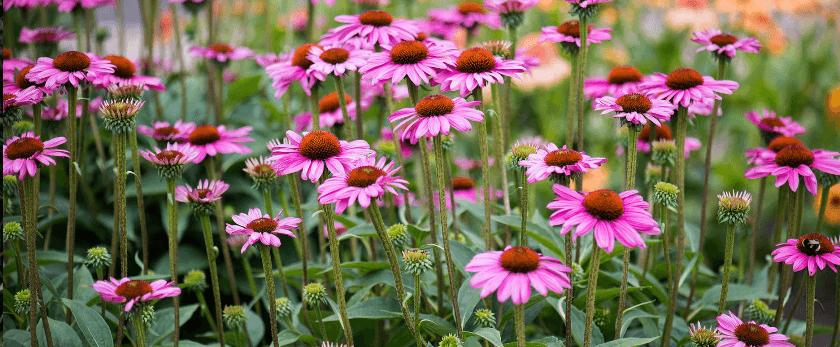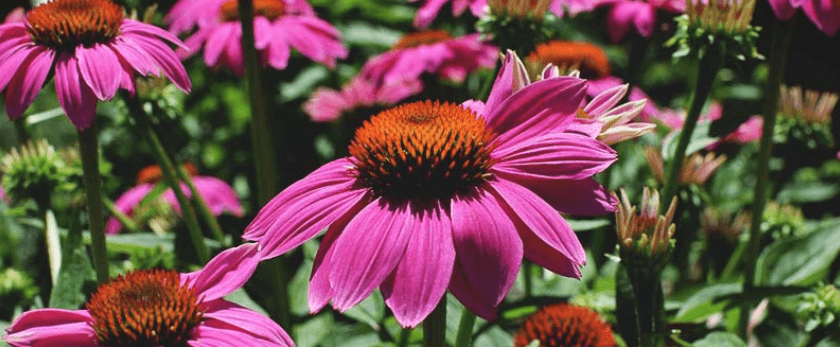Echinacea, also known as coneflower, is a beautiful and versatile plant that not only adds a pop of color to your garden but also has many medicinal properties. It is a hardy perennial that can thrive in a variety of climates and soil conditions, making it a popular choice for gardeners. In this article, we will discuss how to grow and care for echinacea, the best time to grow it, and common problems that may arise.
How to Care for Echinacea
Watering
Echinacea plants are drought-tolerant and do not require frequent watering. However, they do need consistent moisture to thrive. Water your echinacea plants deeply once a week, making sure the soil is moist but not waterlogged. During hot and dry weather, you may need to water more frequently. It is best to water in the morning to allow the leaves to dry out during the day, reducing the risk of fungal diseases.
Light
Echinacea plants prefer full sun but can also tolerate partial shade. They need at least 6 hours of direct sunlight per day to bloom and grow properly. If you are growing echinacea in a hot climate, it is best to provide some afternoon shade to prevent the plant from wilting.
Soil
Echinacea plants prefer well-draining soil that is rich in organic matter. They can tolerate a wide range of soil pH levels, but a slightly acidic to neutral soil (pH 6.0-7.0) is ideal. If your soil is heavy and clay-like, add some compost or sand to improve drainage.
Fertilizer
Echinacea plants do not require much fertilizer, but a light application of a balanced fertilizer in the spring can help promote healthy growth and blooming. Avoid using high-nitrogen fertilizers, as they can cause the plant to produce more foliage and fewer flowers.
Pruning
Deadheading, or removing spent flowers, can encourage your echinacea plant to produce more blooms. It also prevents the plant from self-seeding, which can lead to overcrowding. Cut the flower stalks down to the base of the plant once the flowers have faded. In the fall, you can cut the entire plant down to the ground to promote new growth in the spring.
What is the Best Time to Grow Echinacea?
Echinacea plants can be grown from seeds or transplanted as young plants. The best time to grow echinacea depends on your location and climate.
Growing from Seeds
If you are starting echinacea from seeds, it is best to sow them in the fall. This allows the seeds to go through a period of cold stratification, which is necessary for germination. Simply scatter the seeds on the soil surface and lightly press them into the soil. Keep the soil moist, and the seeds should germinate in the spring.
Transplanting Young Plants
If you are transplanting young echinacea plants, it is best to do so in the spring after the last frost has passed. This will give the plants enough time to establish themselves before the hot summer months.

Common Problems with Echinacea
Echinacea plants are generally low-maintenance and resistant to pests and diseases. However, there are a few common problems that you may encounter.
Powdery Mildew
Powdery mildew is a fungal disease that can affect echinacea plants, especially in humid and crowded conditions. It appears as a white powdery substance on the leaves and can cause them to turn yellow and wilt. To prevent powdery mildew, make sure your plants have good air circulation and avoid overhead watering. If your plants do get infected, you can treat them with a fungicide.
Aster Yellows
Aster yellows is a bacterial disease that can cause distorted growth and yellowing of the leaves. It is spread by leafhoppers and can be difficult to control. The best way to prevent aster yellows is to remove any infected plants and control leafhoppers with insecticidal soap.
Root Rot
Root rot is a common problem in echinacea plants, especially in poorly draining soil. It is caused by a fungus that attacks the roots, causing them to rot and the plant to wilt. To prevent root rot, make sure your plants are in well-draining soil and avoid overwatering. If your plants do get infected, remove them from the soil and dispose of them to prevent the spread of the fungus.
Conclusion
Echinacea is a beautiful and versatile plant that can add color and interest to your garden while also providing medicinal benefits. By following these care tips and being aware of common problems, you can successfully grow and enjoy this hardy perennial. Remember to be mindful of responsible disposal methods for a sustainable future, and happy gardening!










